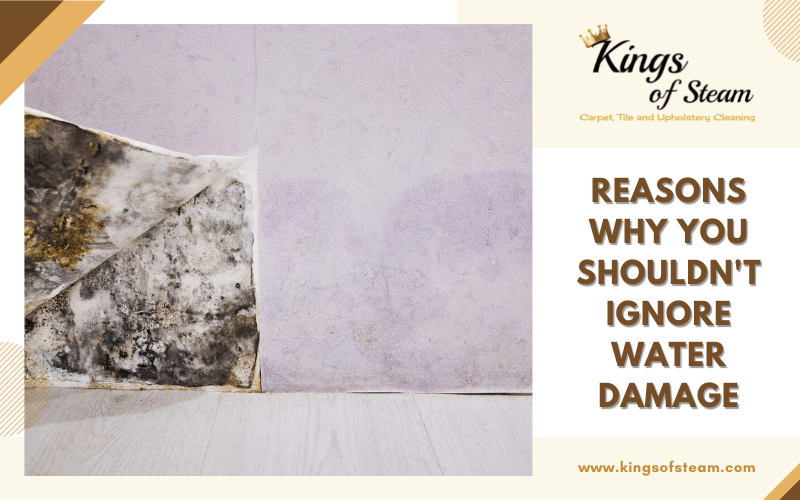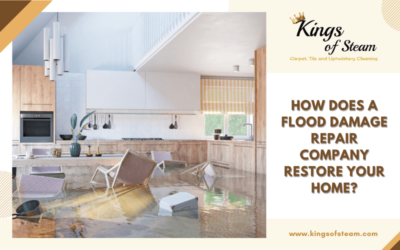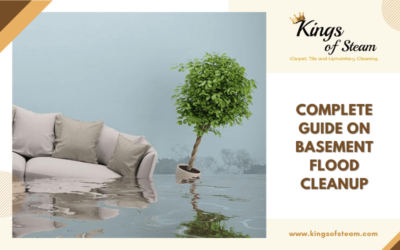Water damage is when your house components get damaged due to water leakage. It usually happens with faulty plumbing, leaky faucet, or storm surge. Either you can see water inundating the floors, or it shows up as damp walls, carpets, and ceilings. Whatever the form may be, a water damage situation is serious. It demands prompt action.
Ignoring a water damage situation might put you at added risk later. Here is how. Imagine you had invisible water damage where your carpet got soaked. You dried it, and eventually, it started appearing dry on the surface. You cannot see the growing mold inside the carpet fibers, which will appear as black patches after some days. That is when you will realize the after-effects of a water damage problem.
As a result, never ignore a water damage issue. Check out this space for more such reasons to do so.
Top Reasons To Not Ignore A Water Damage Situation
↬ Structural Damage
Little you may know, water damage can harm your building structure. The fundamental blocks of any building are steel rods and reinforced concrete. When there is a situation in which you have a building’s portions inundated in water, the signs of structural damage are visible.
You can identify the damage with large cracks in slabs, ceilings, or walls. Uneven cracks around doors and windows, sagging roofs, cracked floors, and damp subfloors are additional signs of damage. Another grave damage caused is the corrosion of steel bars used in the building. You cannot see it readily, but it puts the entire stability at significant risk.
It takes some time for these signs to appear. However, if you have water damage that affects the structure, it can be visible as wet and moldy patches. You never know when the building might fall due to structural damage. Thus, it is dangerous to ignore even the slightest signs of water damage.
↬ Increased Repair Costs
Staining is a frequent symptom of water damage, and it’s usually produced by leaking pipes on the walls or ceilings. If you overlook these faults, you can anticipate expensive water costs in the future.
If you see discoloration on the ceiling and walls, you should investigate as quickly as possible. If you treat the source of the leakage, you can avoid a drastic surge in your power expenses.
Water damage may have an impact on your homeowner’s insurance. In most cases, home insurance will cover any costs associated with property damages. However, most insurance firms require policyholders to report water damage as early as possible. Inability to do so may make filing a claim more difficult.
↬ Electrical Damage
Electrical difficulties, particularly in flooded basements, are another dangerous hazard. You have scores of wires going through the ceiling and walls as a part of concealed wiring. Then there are electric connections with your appliances. All these remain threatened with a water damage situation.
Water and electricity are a lethal combination. It could trigger electric spikes or even flames in unsuspecting individuals. Regardless of the extent of the water damage, you should contact a professional as soon as possible to get it repaired. Ignoring the issue can lead to several structural harms that are costly to fix and harmful to everybody in your household.
↬ Unseen Damage & Appearance
It’s not always possible to tell what caused the water damage merely by glancing at it. It can trigger by a mixture of factors. But there’s almost certainly a root factor that needs attention. These difficulties could involve stuff like roof holes, leading to further problems.
The visible water damage might be the smallest of your concerns. How can you even judge by looking at the wall behind it the steel rods have started rotting? Or can you identify a broken pipe in your home plumbing network? Sure, it is not your job to do so. Contact water damage restoration professionals as they can pinpoint the root causes readily.
There could be a lot extra happening around beneath the surface. And it could be much terrible. You may not believe it’s that horrible, but it’s likely just the beginning.
↬ Mold & Mildew
Any category of water damage induces humidity levels to rise, resulting in a slew of problems. These are harmful to your health. Mold and mildew thrive in water-damaged sections of the house.
A mold and mildew outbreak could develop if the problem is left unattended. Mold can spread in flooded regions, leaking windows, pipelines, and ceilings. They’ll ultimately appear on your home’s attic, plasterboard, carpet, and furnishings as they expand.
Mold growth will smell and contaminate the environment in your home at some point. Mold can be harmful to one’s health, producing coughing and rashes and significant allergic responses.
Mold outbreaks are luckily avoidable. Contact a specialist at the earliest sign of water damage. They ought to be able to inhibit the growth of mold. Most water damage restoration services also include the removal of any existing mold or mildew.
The Rock Bottom Line
While a water damage situation might indeed send you to rock bottom, it is not the end of the world. It is easy to assess it if you know the tell-tale signs. Look out for any smallest of persistently wet patches around your home. Now, this is different from water spills. The spills get dried up, but a wet patch from water damage will not.
It is because it has a continued source of water. Also, inspect regularly for any inconsistencies in your appliances or house structure. You may report it to the professionals and seek immediate help. Get your plumbing systems and equipment dealing with water serviced regularly. Such measures will help you, in the long run, to be watchful of any potential water damage.




